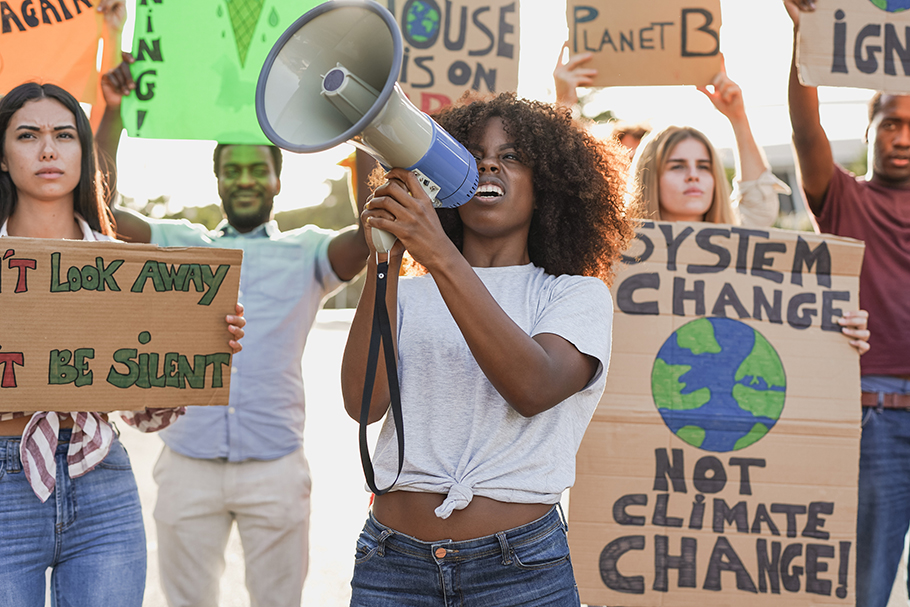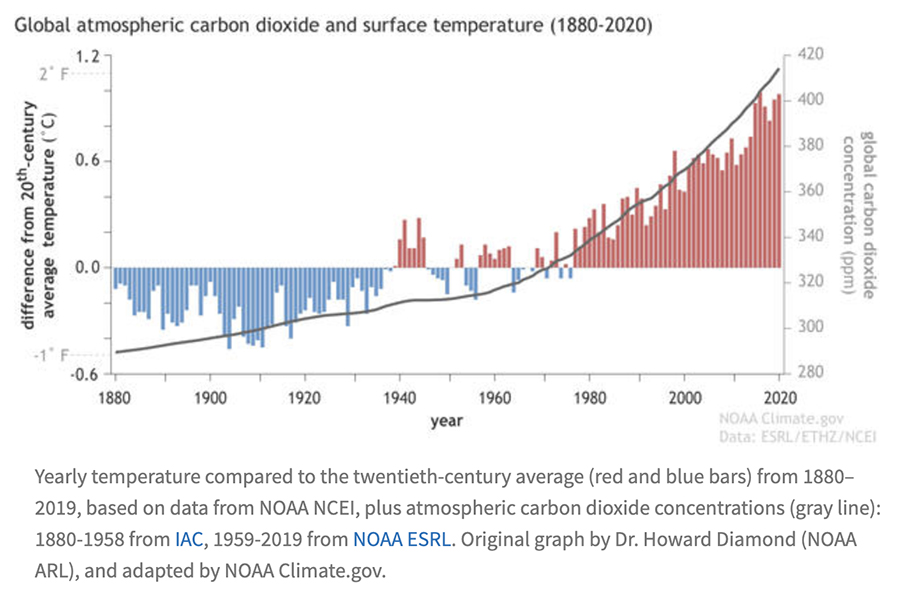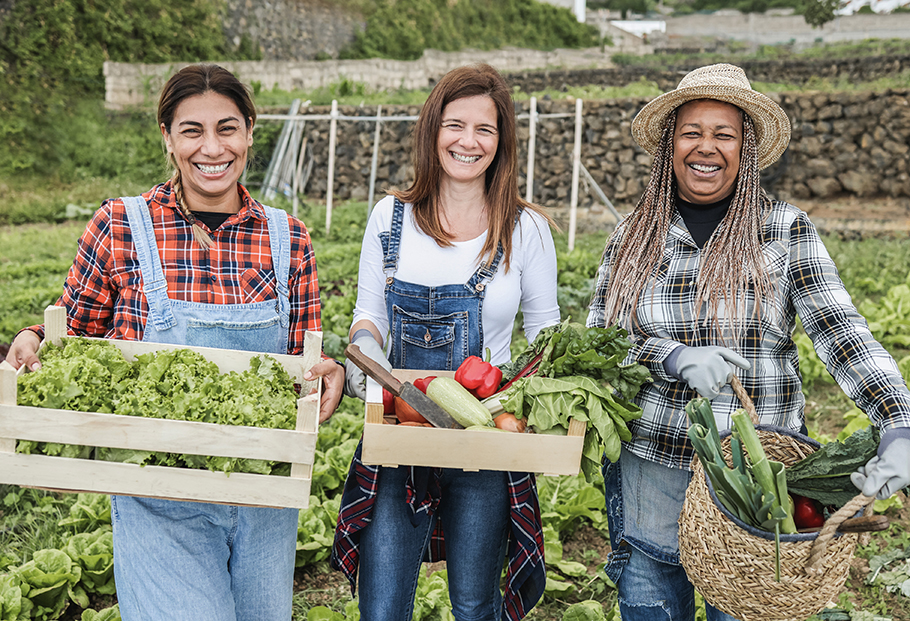
What is Climate Justice, Why We Should Care, and Considerations for Regenerative Agriculture
by CRARS staff member Sheryl Karas MA

 The concept of Climate Justice comes out of the realization that climate change is already happening and the effects are falling hardest on disadvantaged populations—people of color and indigenous people, low income people of all races, women, elderly, the disabled, and the very young. These groups are also the least responsible for creating the manmade conditions responsible for exacerbating global warming. Greenhouse gas emissions are intrinsically linked to changes that have occurred since the industrial revolution (especially since the 1960s) and the need to distribute the goods and services created. Those emissions come primarily from six sectors of the economy(opens in new window): transportation, electricity production through burning of fossil fuels, industry, commercial and residential emissions, agriculture, and other land use and forestry practices. Poor nations and poor people in wealthier countries reap very few of the rewards from these activities while riches are extracted from their communities or through the low-paid use of their labor. According to the latest data from Oxfam International(opens in new window), the wealthiest 1 per cent are responsible for twice as many emissions as the poorest 50 per cent of humanity.
The concept of Climate Justice comes out of the realization that climate change is already happening and the effects are falling hardest on disadvantaged populations—people of color and indigenous people, low income people of all races, women, elderly, the disabled, and the very young. These groups are also the least responsible for creating the manmade conditions responsible for exacerbating global warming. Greenhouse gas emissions are intrinsically linked to changes that have occurred since the industrial revolution (especially since the 1960s) and the need to distribute the goods and services created. Those emissions come primarily from six sectors of the economy(opens in new window): transportation, electricity production through burning of fossil fuels, industry, commercial and residential emissions, agriculture, and other land use and forestry practices. Poor nations and poor people in wealthier countries reap very few of the rewards from these activities while riches are extracted from their communities or through the low-paid use of their labor. According to the latest data from Oxfam International(opens in new window), the wealthiest 1 per cent are responsible for twice as many emissions as the poorest 50 per cent of humanity.
Poverty leaves people extremely vulnerable to serious storms and floods, wildfires, heat, food and water insecurity. They’re more likely to get sick and to live in substandard housing. And the burden of taking care of the most vulnerable people in a family (children, elderly, and the sick) disproportionately falls on women(opens in new window). They also wind up most vulnerable to sex trafficking(opens in new window) and starvation when families struggle to survive. And while nations are often welcoming to migrants perceived as well-educated and wealthy, they are far less willing to open their doors to poor people escaping the tragedies they experience. Unfortunately, migration caused at least partially by climate change (PDF) is already happening and is predicted to greatly increase over time.
There is also intergenerational inequity, an issue that was particularly bought to the fore by the Fridays for Future(opens in new window) youth movement that grew around Greta Thunberg’s climate protesting. According to a recent study(opens in new window), children born in 2020 will experience two to seven times the number of extreme weather events, especially heat waves, compared to people born in 1960. Young adults are acutely aware of the problems coming. Researchers at the University of Bath (Great Britain) recently surveyed 10,000 young people (age 16-25 years) from 10 countries about their thoughts and feelings about climate change(opens in new window). 59% said they felt very or extremely worried, 84% at least moderately worried, and a whopping 77% looked at the future with fear. 56% actually believe humanity is doomed. This is already adversely affecting their daily lives. Young people living in poorer countries in the Southern hemisphere know they are more likely to experience climate-related disasters, and the effect on their mental health and ability to function is considerably worse.
Certainly, this is an ethical dilemma that many people are exploring. A quick search for articles on Climate Justice initially brings up the need to address this as a moral issue(opens in new window). Without ethics, the temptation is for wealthier nations to continue doing what they’ve been doing and not worry about the consequences to other nations. But it’s more than that. We need all hands on deck for the changes that need to be made and, if the consequences of those changes have too large an impact on the lives of poor people, they won’t be able to do it all. Wealthier nations bear most of the responsibility for climate change and need to take on a much more equitable share of the cost of addressing it because they can more easily afford to do so. Nobody is likely to escape the consequences of climate change if we do not. Widespread war, protest, homelessness, starvation, and mass migration(opens in new window) are the most likely consequences of leaving poorer nations and poor people in our own country out. Doing whatever we can to mitigate climate change in the most equitable ways possible is not just the most ethical choice, it is also the most beneficial one for the world as a whole.
Considerations for Regenerative Agriculture
Conventional farming in the Western World is not only practiced using methods that harm the soil and add excessive greenhouse emissions into the atmosphere. It has been shaped by historical inequities that have led to 96% of the farms in the United States being owned by white people (PDF) and 98% of the acreage. So, for example, even though Black people represent 12-14% of the population in the United States, only 2% of U.S. farmers(opens in new window) are Black (down from 14% in 1910). Multiple factors have played into this but discriminatory practices(opens in new window) that kept them from obtaining government assistance and loans has played a significant part. But the challenges don’t stop there. Due to multiplying factors only 1.3 percent of the overall population of all races in the U.S. farm at all! Access to affordable enough land(opens in new window) to even begin farming is increasingly out of reach for the vast majority of the people.
Only 21.5% of production(opens in new window) is produced by small-scale farms anymore. The U.S. food system has become dependent on consolidated large scale operations that rely on industrial approaches to agriculture and distribution. Government policies have consistently favored larger farms who also have a competitive advantage due to economies of scale. Furthermore, the industry relies heavily on supply chains that wind up making it difficult, if not impossible, for smaller farms to set their own price points and compete. The desire to reduce transaction costs (PDF) also leads consolidated firms to only do business with large operations as it is less expensive to arrange a contract with one large farm instead of several small ones. This is especially challenging for those who have chosen regenerative farming unless they can successfully market directly to consumers in their local area or via the internet.
Organizations such as Fibershed(opens in new window) (multi-region) and Foodshed(opens in new window) (San Diego region only) are two organizations in California that have developed regenerative agriculture programs committed to developing regional (short supply chain) systems that support local communities. Farm incubator programs such as the one through Glynwood Center for Regional Food and Farming(opens in new window) in New York state have sprung up in various places around the world to give disadvantaged new farmers access to land and training. Combining regenerative farming incubators with regional regenerative product distribution hubs is a potentially powerful niche waiting to be more extensively filled.
One of our CRARS co-founders Rosie Burroughs recently testified to a U.S. House subcommittee(opens in new window) on the importance of leveling the playing field for farmers choosing sustainable methods that help with climate change mitigation and resiliency. She advocated for funding for collaborative research, education, outreach, and technical assistance for the implementation of regenerative and sustainable practices as being the key to success. Interestingly, the USDA just announced that they are investing one billion dollars for exactly this purpose through the Partnerships for Climate Smart Commodities program(opens in new window). Additionally, the program is emphasizing that participants must show how they will assist producers in marketing their climate-smart products. Eligible participants must also show how they will reach out and include small or historically underserved producers.
The Biden administration has made a commitment to support environmental justice through the Justice40 Initiative(opens in new window) which aims to deliver 40 percent of the overall benefits of federal investments in climate and clean energy to disadvantaged communities. On January 27, 2021 Biden signed an executive order to make environmental justice a part of the mission of every federal agency by directing them to develop programs, policies, and activities specifically to address the health, environmental, economic, and climate impacts on people who would otherwise suffer most.
We will likely see more government programs of benefit to regenerative farmers, like Partnerships for Climate Smart Commodities, that include climate justice as a requirement in the future. That means that tying regenerative agriculture to serving disadvantaged communities is no longer just an idealistic idea to consider; it’s an imperative.
Want to learn more?
On March 24-25, Chico State is sponsoring the This Way to Sustainability Conference with the theme of “Elevating the Voices of Climate Justice.” The conference will be completely available online with inspirational live-streamed keynote speakers, break-out sessions on multiple topics, a virtual art show, panel discussions, and additional opportunities to network and interact. Register now(opens in new window).

